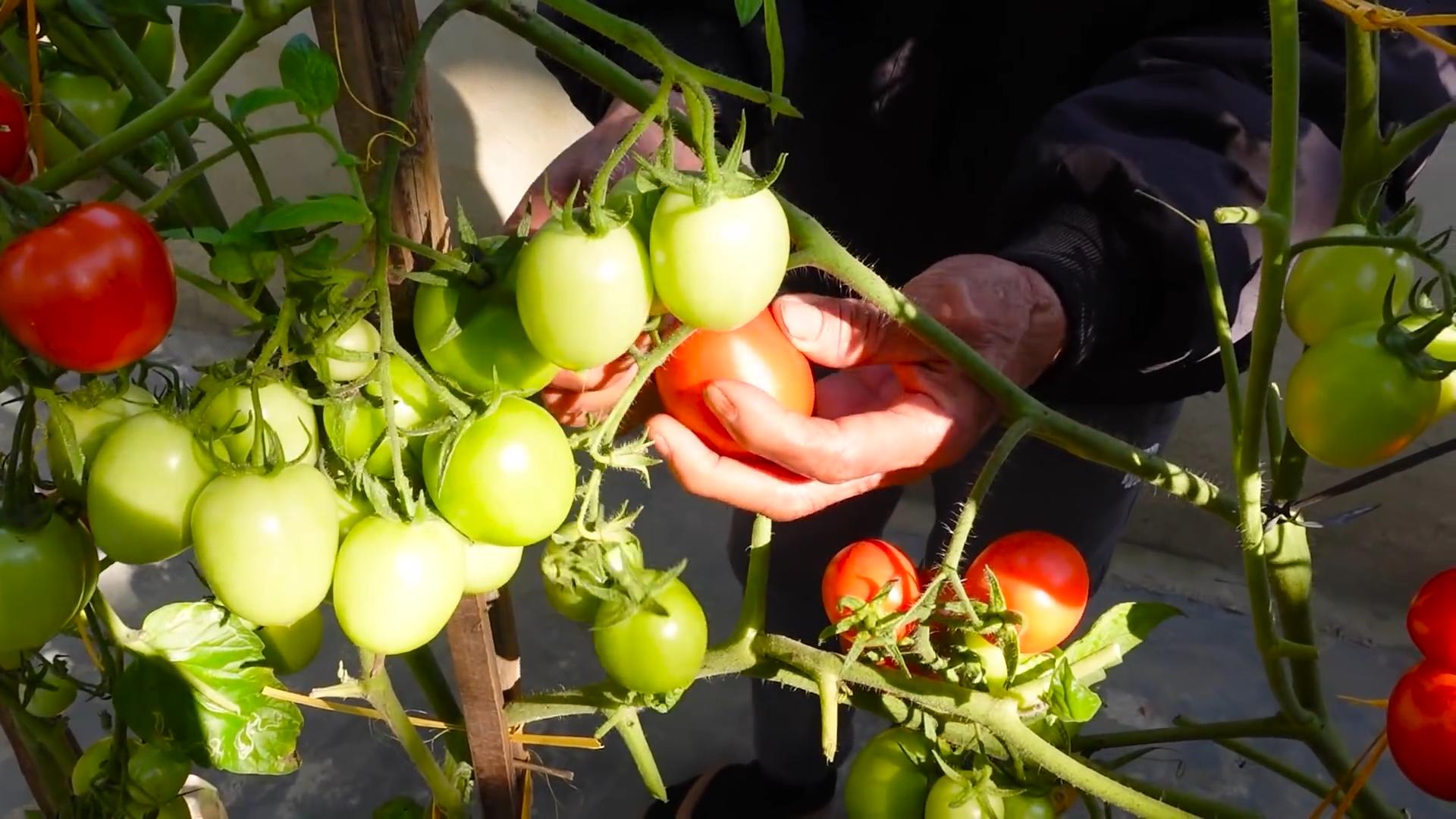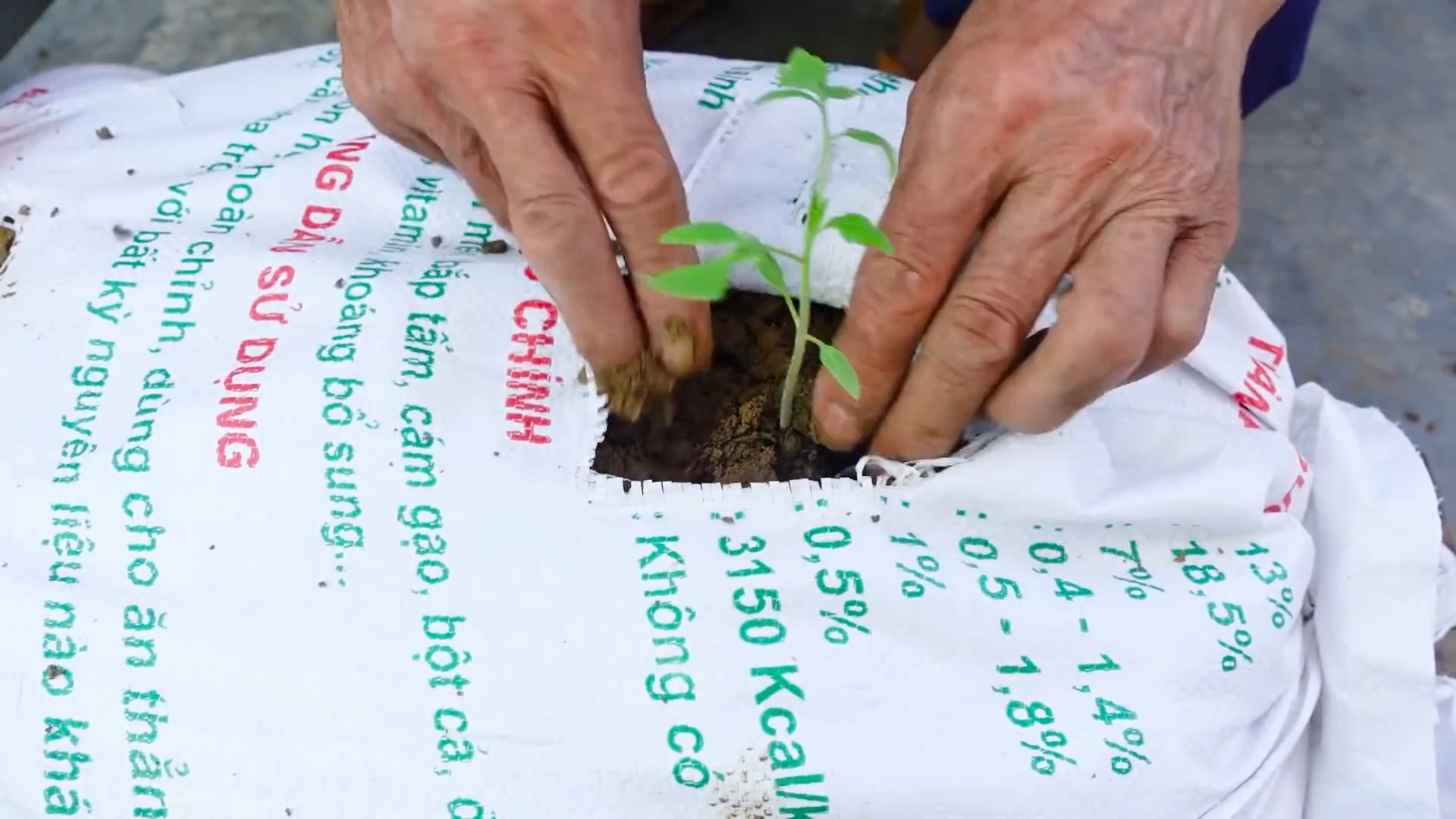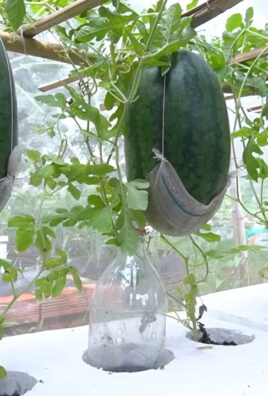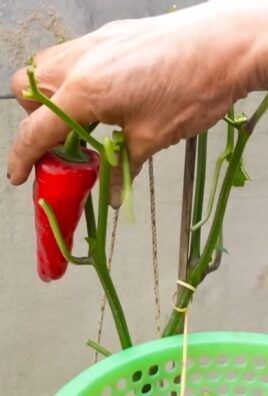Grow tomatoes at home, and you’ll unlock a world of flavor far beyond anything you can find in the grocery store! Imagine biting into a sun-warmed, juicy tomato, bursting with sweetness – a taste that’s a direct result of your own care and effort. For centuries, cultivating tomatoes has been a cherished tradition, from the ancient Aztecs who first domesticated them to the Italian immigrants who popularized them in America. Tomatoes weren’t always popular, though! They were once feared as poisonous, but now they are a staple in cuisines worldwide.
But let’s be honest, getting those perfect, plump tomatoes can sometimes feel like a battle against pests, diseases, and unpredictable weather. That’s where our DIY tricks and hacks come in! I’m here to share some simple, effective, and budget-friendly methods to help you grow tomatoes at home successfully, even if you have limited space or experience. Whether you’re a seasoned gardener or just starting out, these tips will empower you to nurture healthy, thriving tomato plants and enjoy a bountiful harvest. Get ready to transform your garden (or even your balcony!) into a tomato paradise!

Growing Delicious Tomatoes at Home: A Beginner’s Guide
Okay, so you want to grow your own juicy, sun-ripened tomatoes? Awesome! Trust me, there’s nothing quite like biting into a tomato you’ve nurtured from a tiny seed. It’s easier than you think, and I’m here to walk you through the whole process. Let’s get started!
Choosing the Right Tomato Variety
First things first, you need to decide what kind of tomatoes you want to grow. There are literally hundreds of varieties, but here are a few popular choices to get you started:
* Cherry Tomatoes: These are small, sweet, and perfect for snacking or salads. They’re also generally pretty easy to grow.
* Roma Tomatoes: These are paste tomatoes, ideal for making sauces and canning. They have a meaty texture and fewer seeds.
* Beefsteak Tomatoes: These are the big boys! They’re juicy, flavorful, and great for slicing on sandwiches.
* Heirloom Tomatoes: These are older varieties that have been passed down through generations. They often have unique colors, shapes, and flavors.
Consider your climate and growing space when making your choice. Some varieties are better suited for certain regions than others. Check your local garden center or online resources for recommendations.
Starting from Seed vs. Buying Seedlings
You have two main options for starting your tomato plants: from seed or from seedlings (also called transplants).
* Starting from Seed: This gives you more control over the variety and allows you to start earlier in the season. However, it requires more time and effort.
* Buying Seedlings: This is a quicker and easier option, especially for beginners. You can find seedlings at most garden centers in the spring.
I personally love starting from seed because it’s so rewarding to watch those tiny sprouts emerge. But if you’re short on time or space, buying seedlings is perfectly fine.
Starting Tomatoes from Seed (Optional)
If you’re going the seed route, here’s what you’ll need:
* Tomato seeds
* Seed starting trays or small pots
* Seed starting mix (a light, sterile soil mix)
* A spray bottle
* A heat mat (optional, but helpful)
* A grow light (optional, but recommended)
Here’s the step-by-step process:
1. Sow the Seeds: Fill your seed starting trays or pots with seed starting mix. Moisten the mix with a spray bottle. Sow 2-3 seeds per cell or pot, about 1/4 inch deep.
2. Provide Warmth and Light: Place the trays or pots on a heat mat (if using) and under a grow light (if using). The ideal temperature for germination is around 75-85°F (24-29°C). If you don’t have a grow light, place the trays in a sunny window, but be sure to rotate them regularly to prevent the seedlings from leaning towards the light.
3. Keep the Soil Moist: Water the seedlings regularly with a spray bottle to keep the soil moist but not soggy.
4. Thin the Seedlings: Once the seedlings have their first true leaves (the second set of leaves that appear after the initial seed leaves), thin them to one seedling per cell or pot. Snip off the weaker seedlings at the soil line with scissors.
5. Harden Off the Seedlings: Before transplanting the seedlings outdoors, you need to “harden them off.” This means gradually exposing them to outdoor conditions over a period of 7-10 days. Start by placing them in a sheltered spot outdoors for a few hours each day, gradually increasing the amount of time they spend outside.
Preparing the Planting Site
Whether you’re starting from seed or buying seedlings, you’ll need to prepare your planting site. Tomatoes need at least 6-8 hours of sunlight per day. Choose a location that gets plenty of sun and has well-drained soil.
1. Amend the Soil: Tomatoes are heavy feeders, so it’s important to amend the soil with compost or other organic matter. This will improve drainage, fertility, and water retention.
2. Test the Soil pH: Tomatoes prefer a slightly acidic soil pH of around 6.0-6.8. You can test your soil pH with a soil testing kit. If the pH is too high, you can lower it by adding sulfur or peat moss. If it’s too low, you can raise it by adding lime.
3. Dig the Planting Holes: Dig holes that are slightly larger than the root ball of your seedlings. Space the holes about 2-3 feet apart, depending on the variety.
Transplanting Tomatoes
Now comes the fun part: transplanting your tomato plants into the garden!
1. Carefully Remove the Seedlings: Gently remove the seedlings from their trays or pots. If the roots are tightly bound, gently loosen them with your fingers.
2. Plant Deeply: Plant the tomato seedlings deeply, burying the stem up to the first set of leaves. This will encourage the plant to develop more roots along the buried stem, resulting in a stronger, healthier plant.
3. Water Thoroughly: Water the newly transplanted seedlings thoroughly.
4. Add Support: Tomatoes need support to prevent them from sprawling on the ground. You can use stakes, cages, or trellises. Install the support at the time of planting to avoid damaging the roots later.
Caring for Your Tomato Plants
Once your tomato plants are in the ground, it’s important to provide them with proper care.
1. Water Regularly: Tomatoes need consistent watering, especially during hot, dry weather. Water deeply and regularly, aiming for about 1-2 inches of water per week. Avoid watering the foliage, as this can encourage disease.
2. Fertilize Regularly: Tomatoes are heavy feeders and need regular fertilization. Use a balanced fertilizer specifically formulated for tomatoes. Follow the instructions on the fertilizer label.
3. Prune Your Plants: Pruning can help improve air circulation, reduce disease, and encourage fruit production. Remove suckers (the small shoots that grow between the main stem and the branches) to direct the plant’s energy towards fruit production.
4. Mulch Around the Plants: Mulching around the plants with straw, wood chips, or other organic matter can help retain moisture, suppress weeds, and regulate soil temperature.
5. Watch Out for Pests and Diseases: Tomatoes are susceptible to a variety of pests and diseases. Inspect your plants regularly for signs of trouble. Common pests include aphids, tomato hornworms, and whiteflies. Common diseases include early blight, late blight, and blossom end rot. Treat any problems promptly with appropriate organic or chemical controls.
Dealing with Common Tomato Problems
Even with the best care, you might encounter some common tomato problems. Here’s how to deal with them:
* Blossom End Rot: This is caused by a calcium deficiency and results in a dark, leathery spot on the bottom of the tomato. To prevent blossom end rot, ensure consistent watering and add calcium to the soil.
* Early Blight: This is a fungal disease that causes dark spots on the leaves. To prevent early blight, improve air circulation, avoid watering the foliage, and use a fungicide if necessary.
* Tomato Hornworms: These are large green caterpillars that can quickly defoliate your tomato plants. Handpick them off the plants or use an insecticide.
* Aphids: These are small, sap-sucking insects that can weaken your tomato plants. Spray them off with a strong stream of water or use an insecticidal soap.
Harvesting Your Tomatoes
The moment you’ve been waiting for! Harvesting your own homegrown tomatoes is incredibly satisfying.
1. Wait for Ripeness: Tomatoes are ripe when they are fully colored and slightly soft to the touch. The color will depend on the variety.
2. Gently Twist or Cut: Gently twist the tomato off the vine or cut it with pruning shears.
3. Enjoy! Enjoy your delicious, homegrown tomatoes in salads, sandwiches, sauces, or just eat them straight off the vine!
Extending the Tomato Season
Want to enjoy fresh tomatoes for as long as possible? Here are a few tips for extending the tomato season:
* Start Early: Start your seeds indoors early in the spring to get a head start on the season.
* Choose Early-Maturing Varieties: Select tomato varieties that mature quickly.
* Use Row Covers: Row covers can protect your plants from frost and extend the growing season.
* Pick Green Tomatoes: If frost is imminent, pick any remaining green tomatoes and ripen them indoors. Place them in a paper bag with an apple or banana to speed up the ripening process.
Growing tomatoes at home is a rewarding experience that anyone can enjoy. With a little planning and effort, you can have a bountiful harvest of delicious, homegrown tomatoes. Happy gardening!

Conclusion
So, there you have it! Growing tomatoes at home isn’t just a gardening hobby; it’s a gateway to flavor, freshness, and a deeper connection with your food. This DIY trick, focusing on [specific aspect of the trick mentioned in the main article, e.g., “creating a self-watering container” or “using coffee grounds as fertilizer”], is a game-changer for both novice and experienced gardeners. It simplifies the process, maximizes your yield, and minimizes the common pitfalls that often plague tomato cultivation.
Why is this a must-try? Because it empowers you to control every aspect of your tomato’s life, from the soil it thrives in to the nutrients it receives. Store-bought tomatoes, while convenient, often lack the vibrant taste and juicy texture of homegrown varieties. This DIY method allows you to cultivate tomatoes bursting with flavor, packed with nutrients, and free from unwanted chemicals. Imagine biting into a sun-ripened tomato, still warm from the garden, knowing you nurtured it from seed to table. That’s the magic of growing your own.
But the beauty of this DIY approach lies in its adaptability. Feel free to experiment with different tomato varieties. Cherry tomatoes, Roma tomatoes, beefsteak tomatoes – the possibilities are endless! You can also tailor the soil mix to your specific climate and tomato variety. Consider adding compost tea for an extra boost of nutrients or companion planting with basil to deter pests and enhance flavor. If you’re short on space, try growing tomatoes in hanging baskets or vertical planters. The key is to embrace the process and find what works best for you.
Don’t be intimidated if you’re new to gardening. This DIY trick is designed to be accessible and straightforward. With a little patience and attention, you’ll be harvesting delicious tomatoes in no time. And the satisfaction of growing your own food is truly unparalleled.
We wholeheartedly encourage you to give this DIY trick a try. Start small, learn as you go, and don’t be afraid to experiment. The rewards are well worth the effort. And most importantly, we want to hear about your experience! Share your photos, tips, and challenges in the comments below. Let’s create a community of tomato-growing enthusiasts and learn from each other. Your insights could inspire others to embark on their own tomato-growing journey. So, grab your seeds, get your hands dirty, and get ready to enjoy the taste of homegrown goodness! Let’s all become masters of growing tomatoes at home!
Frequently Asked Questions (FAQs)
What are the best tomato varieties to grow at home?
The best tomato varieties to grow at home depend on your climate, space, and personal preferences. For beginners, cherry tomatoes and Roma tomatoes are often recommended due to their ease of growth and high yields. Cherry tomatoes are perfect for snacking and salads, while Roma tomatoes are ideal for sauces and canning. If you have more space and are looking for a larger tomato, beefsteak varieties are a popular choice, but they may require more support and attention. Heirloom tomatoes are also gaining popularity for their unique flavors and colors, but they can be more susceptible to diseases. Research different varieties and choose those that are well-suited to your local growing conditions. Consider factors like disease resistance, maturity time, and fruit size when making your selection. Don’t be afraid to experiment with different varieties to find your favorites!
How often should I water my tomato plants?
Watering frequency depends on several factors, including the weather, soil type, and the size of your tomato plants. Generally, tomato plants need about 1-2 inches of water per week. Check the soil moisture regularly by sticking your finger about an inch deep into the soil. If the soil feels dry, it’s time to water. Water deeply and thoroughly, ensuring that the water reaches the roots. Avoid watering the foliage, as this can promote fungal diseases. In hot, dry weather, you may need to water more frequently. Using a self-watering container or adding mulch around your tomato plants can help to retain moisture and reduce the need for frequent watering. Overwatering can be just as harmful as underwatering, so be sure to monitor the soil moisture carefully.
What kind of fertilizer should I use for my tomato plants?
Tomato plants are heavy feeders and require regular fertilization to thrive. A balanced fertilizer with an NPK ratio (nitrogen, phosphorus, potassium) of 5-10-5 or 10-10-10 is a good starting point. Nitrogen promotes leafy growth, phosphorus supports root development and flowering, and potassium enhances fruit production. You can also use organic fertilizers such as compost, compost tea, or fish emulsion. Apply fertilizer according to the package instructions, typically every 2-3 weeks. Avoid over-fertilizing, as this can lead to excessive foliage growth and reduced fruit production. Consider using a fertilizer specifically formulated for tomatoes, as these often contain micronutrients that are essential for healthy growth. Soil testing can help you determine the specific nutrient needs of your soil and guide your fertilizer choices.
How do I prevent pests and diseases from affecting my tomato plants?
Preventing pests and diseases is crucial for successful tomato growing. Start by choosing disease-resistant tomato varieties. Practice good garden hygiene by removing weeds and debris around your tomato plants. Water at the base of the plants to avoid wetting the foliage, which can promote fungal diseases. Use a copper fungicide preventatively. Companion planting with basil, marigolds, or other herbs can help to deter pests. Regularly inspect your tomato plants for signs of pests or diseases. If you spot any problems, take action immediately. Insecticidal soap or neem oil can be effective for controlling many common tomato pests. For fungal diseases, consider using a fungicide specifically formulated for tomatoes. Crop rotation can also help to prevent soilborne diseases from building up.
How do I know when my tomatoes are ripe?
The color of the tomato is the most obvious indicator of ripeness. Tomatoes typically turn from green to red, yellow, or orange when they are ripe, depending on the variety. However, color alone is not always a reliable indicator. Ripe tomatoes should also feel slightly soft to the touch and have a pleasant aroma. Gently squeeze the tomato; it should give slightly but not be mushy. The stem should also detach easily from the vine when the tomato is ripe. Taste is the ultimate test of ripeness. Pick a tomato and give it a try. If it tastes sweet and flavorful, it’s ready to be harvested. Remember that tomatoes will continue to ripen after they are picked, so you can harvest them slightly before they are fully ripe and allow them to ripen indoors.
Can I grow tomatoes in containers?
Yes, you can absolutely grow tomatoes in containers! In fact, container gardening is a great option for those with limited space or poor soil. Choose a container that is at least 20 gallons in size to provide enough room for the roots to grow. Use a high-quality potting mix that is well-draining. Select tomato varieties that are well-suited for container growing, such as dwarf or determinate varieties. Provide adequate support for the plants, such as a stake or cage. Water regularly and fertilize as needed. Place the container in a sunny location that receives at least 6-8 hours of sunlight per day. With proper care, you can enjoy a bountiful harvest of tomatoes from your container garden.
What do I do if my tomato plants are not producing fruit?
There are several reasons why your tomato plants may not be producing fruit. One common cause is lack of pollination. Tomatoes are self-pollinating, but they may need help from wind or insects to transfer pollen. You can gently shake the plants or use a small brush to transfer pollen from one flower to another. Another possible cause is temperature stress. Tomatoes prefer temperatures between 60°F and 85°F. Extreme heat or cold can inhibit fruit production. Insufficient sunlight, lack of nutrients, or pests and diseases can also prevent fruit set. Make sure your tomato plants are receiving adequate sunlight, water, and fertilizer. Inspect them regularly for signs of pests or diseases and take action if necessary.




Leave a Comment